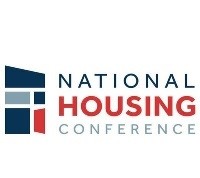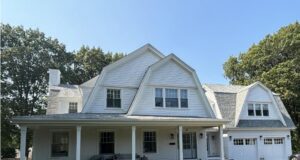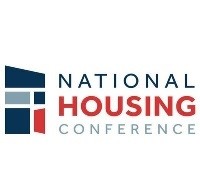Foreclosure Activity on Slow Burn
Activity Inches Up After Three Straight Quarterly Decreases Following Robo-Signing
Foreclosure Processing and Sales Timelines Hit Record Highs
IRVINE, CA – October 13, 2011 – (RealEstateRama) — RealtyTrac® (www.realtytrac.com), the leading online marketplace for foreclosure properties, today released its U.S. Foreclosure Market Report™ for the third quarter of 2011, which shows foreclosure filings — default notices, scheduled auctions and bank repossessions— were reported on 610,337 properties in the third quarter, an increase of less than 1 percent from the previous quarter and a decrease of 34 percent from the third quarter of 2010. The report shows one in every 213 U.S. housing units with a foreclosure filing during the quarter.
Foreclosure filings were reported on 214,855 U.S. properties in September, a 6 percent decrease from August and a 38 percent decrease from September 2010. September marked the 12th straight month where foreclosure activity decreased on a year-over-year basis.
“U.S. foreclosure activity has been mired down since October of last year, when the robo-signing controversy sparked a flurry of investigations into lender foreclosure procedures and paperwork,” said James Saccacio, chief executive officer of RealtyTrac. “While foreclosure activity in September and the third quarter continued to register well below levels from a year ago, there is evidence that this temporary downward trend is about to change direction, with foreclosure activity slowly beginning to ramp back up.
“Third quarter foreclosure activity increased marginally from the previous quarter, breaking a trend of three consecutive quarterly decreases that started in the fourth quarter of 2010,” Saccacio continued. “This marginal increase in overall foreclosure activity was fueled by a 14 percent jump in new default notices, indicating that lenders are cautiously throwing more wood into the foreclosure fireplace after spending months trying to clear the chimney of sloppily filed foreclosures.”
Foreclosure Processing and Sales Timelines Hit Record Highs
U.S. properties foreclosed in the third quarter took an average of 336 days to complete the foreclosure process, up from 318 days in the second quarter and the highest number of days going back to the first quarter of 2007.
New York properties foreclosed in the third quarter took an average of 986 days to complete the foreclosure process, the longest of any state and a record high for the state. The second longest average foreclosure process was in New Jersey, at 974 days, and the third longest average foreclosure process was in Florida, at 749 days.
Texas registered the shortest average foreclosure process of any state, at 86 days, down from 92 days in the second quarter but still up from 53 days in the third quarter of 2007. Kentucky properties foreclosed in the third quarter took an average of 94 days to complete the foreclosure process, the second shortest among the states, and Virginia properties foreclosed in the third quarter took an average of 102 days to complete the foreclosure process, the third shortest among the states.
The average time to sell foreclosures also hit a record high in the third quarter. Properties in the foreclosure process that sold during the third quarter (usually short sales) took an average of 318 days to sell after entering the foreclosure process, up from 245 days in the previous quarter. Bank-owned properties sold in the third quarter took an average of 193 days to sell after being repossessed by the bank, up from 178 days in the second quarter.
Foreclosure Activity by Type
Default notices (NOD, LIS) were filed on 195,878 U.S. properties in the third quarter, up 14 percent from the previous quarter but down 27 percent from the third quarter of 2010. In September, default notices were filed on 70,710 U.S. properties, down 10 percent from a nine-month high in August and down 31 percent from September 2010.
Some of the states with the biggest quarterly increases in default notices included Massachusetts, with a 65 percent quarter-over-quarter increase; New Jersey, with a 29 percent increase; Florida, with a 24 percent increase; Ohio, with a 21 percent increase; and California, also with a 21 percent increase.
Foreclosure auctions (NTS, NFS) were scheduled for the first time for 217,929 U.S. properties in the third quarter, down 6 percent from the previous quarter and down 41 percent from the third quarter of 2010. In September, foreclosure auctions were scheduled for the first time for 79,098 U.S. properties, down 6 percent from August and down 45 percent from September 2010.
Lenders foreclosed on 196,530 U.S. properties during the third quarter, a 4 percent decrease from the previous quarter and a 32 percent decrease from the third quarter of 2010. In September, lenders foreclosed on 65,047 U.S. properties, an increase of less than 1 percent from August but down 36 percent from September 2010, when REO activity hit a monthly peak of 102,134 bank repossessions.
A handful of states posted significant quarterly increases in REO activity in the third quarter, bucking the national trend. Those states included Massachusetts, with a 62 percent quarter-over-quarter increase; Oregon, with a 47 percent increase; Georgia, with a 42 percent increase; and Illinois, with a 27 percent increase.
Nevada, California, Arizona post top state foreclosure rates
Nevada posted the nation’s highest state foreclosure rate — one in every 44 housing units with a foreclosure filing in the third quarter. Overall Nevada foreclosure activity decreased from the previous quarter thanks to decreases in scheduled auctions and REOs, but default notices in Nevada increased 15 percent from the second quarter to the third quarter — boosted in part by a 16 percent month-over-month increase in defaults in September.
California default activity also increased on a quarterly basis, and the state documented the nation’s second highest foreclosure rate — one in every 88 housing units with a foreclosure filing during the quarter.
One in every 93 Arizona housing units had a foreclosure filing in the third quarter, the nation’s third highest state foreclosure rate. Arizona foreclosure activity dropped 25 percent from the previous quarter and was down nearly 40 percent from the third quarter of 2010.
Other states with foreclosure rates ranking among the top 10 in the third quarter were Georgia, Florida, Utah, Michigan, Idaho, Illinois and Colorado.
Top Foreclosure Activity Totals
California’s 153,051 properties with foreclosure filings in the third quarter was the highest total of any state and accounted for one in every four properties with foreclosure filings nationwide during the quarter.
Florida accounted for one in every 9 properties with foreclosure filings nationwide during the third quarter, with a total of 67,886 — the second highest of any state and an increase of 15 percent from the previous quarter. The quarterly increase was driven by a 24 percent increase in new default notices and a 14 percent increase in bank repossessions. Despite the quarterly increase, Florida foreclosure activity in the third quarter was still down 57 percent from the third quarter of 2010.
A 21 percent quarterly increase in overall foreclosure activity — caused largely by a 42 percent increase in REOs — helped Georgia secure the nation’s third highest overall foreclosure activity total during the third quarter. There were a total of 33,637 Georgia properties with foreclosure filings during the quarter, still down 18 percent from the third quarter of 2010.
Other states with foreclosure activity totals among the nation’s 10 highest were Illinois (32,297), Michigan (31,179), Arizona (29,701), Texas (27,860), Nevada (25,900), Ohio (24,166) and Colorado (12,918).
Foreclosure Starts Up in 21 of 25 Metros with Highest Foreclosure Rates
Foreclosure filings initiating the foreclosure process (either defaults or scheduled auctions, depending on the state foreclosure process) increased on a quarterly basis in the third quarter in 21 of the 25 metro areas with the highest foreclosure rates among metropolitan areas with a population of 200,000 or more.
The only top 20 metro areas where foreclosure starts decreased from the previous quarter were the Arizona cities of Phoenix and Prescott, along with Greeley, Colo., and Boise, Idaho.
California cities accounted for 15 of the top 25 metro foreclosure rates, led by Vallejo-Fairfield at No. 2, with one in every 51 housing units with a foreclosure filing during the third quarter. Not far behind were Stockton at No. 3 (one in 52 housing units), Modesto at No. 4 (one in 53 housing units), and Riverside-San Bernardino at No. 5 (one in 56 housing units).
Nevada cities accounted for two of the top 25 metro foreclosure rates, led by Las Vegas at No. 1, with one in every 39 housing units with a foreclosure filing during the third quarter. Reno-Sparks, Nev., ranked No. 9, with one in every 67 housing units with a foreclosure filing.
Two Florida cities also posted foreclosure rates in the top 25: Cape Coral-Fort Myers at No. 15, with one in every 92 housing units with a foreclosure filing in the third quarter; and Miami at No. 23, with one in every 108 housing units with a foreclosure filing.
The two remaining cities in the top 25 were Atlanta at No. 14 (one in every 89 housing units), and Detroit at No. 22 (one in every 108 housing units).
Report Methodology
The RealtyTrac U.S. Foreclosure Market Report provides a count of the total number of properties with at least one foreclosure filing entered into the RealtyTrac database during the month and quarter — broken out by type of filing. Some foreclosure filings entered into the database during a month or quarter may have been recorded in previous months or quarters. Data is collected from more than 2,200 counties nationwide, and those counties account for more than 90 percent of the U.S. population. RealtyTrac’s report incorporates documents filed in all three phases of foreclosure: Default — Notice of Default (NOD) and Lis Pendens (LIS); Auction — Notice of Trustee Sale and Notice of Foreclosure Sale (NTS and NFS); and Real Estate Owned, or REO properties (that have been foreclosed on and repurchased by a bank). For the quarterly report, if more than one foreclosure document is received for a property during the quarter, only the most recent filing is counted in the report. Both the quarterly and monthly reports check if the same type of document was filed against a property previously. If so, and if that previous filing occurred within the estimated foreclosure timeframe for the state where the property is located, the report does not count the property in the current month or quarter.
Report License
The RealtyTrac U.S. Foreclosure Market Report is the result of a proprietary evaluation of information compiled by RealtyTrac; the report and any of the information in whole or in part can only be quoted, copied, published, re-published, distributed and/or re-distributed or used in any manner if the user specifically references RealtyTrac as the source for said report and/or any of the information set forth within the report.
About RealtyTrac Inc.
RealtyTrac (www.realtytrac.com) is the leading online marketplace of foreclosure properties, with more than 2 million default, auction and bank-owned listings from over 2,200 U.S. counties, along with detailed property, loan and home sales data. Hosting more than 3 million unique monthly visitors, RealtyTrac provides innovative technology solutions and practical education resources to facilitate buying, selling and investing in real estate. RealtyTrac’s foreclosure data has also been used by the Federal Reserve, FBI, U.S. Senate Joint Economic Committee and Banking Committee, U.S. Treasury Department, and numerous state housing and banking departments to help evaluate foreclosure trends and address policy issues related to foreclosures.
###
Michelle Schneider
949.502.8300, ext. 139
">
Historical & Detailed Data
Tyler White
949.502.8300 ext. 158
">

















